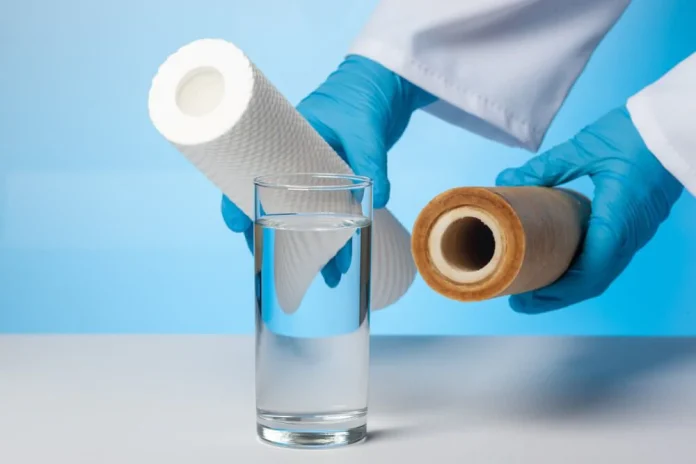Troubleshooting for filter clogging
Firstly, check if the filter element is clogged. Observe the appearance of the filter element for obvious dirt, color changes, or signs of blockage, indicating that the filter element may need to be cleaned or replaced.
If the filter element is clogged but does not need to be replaced, you can try cleaning it. Use appropriate cleaning agents or solvents and follow the equipment manufacturer’s recommendations to soak or wash the filter element to remove dirt and blockages. Be sure to follow safety procedures and ensure thorough cleaning and drying of the filter element.
If the filter element is severely clogged or cleaning is ineffective, it is recommended to replace it with a new one. Select the correct specification and model of the filter element that is compatible with the equipment and follow the proper installation steps for replacement.
Inspect the conditions of filter element usage: Evaluate if the conditions of filter element usage are reasonable. Check the duration of use and working environment of the filter element to determine if there are any improper uses or cases where the filter element has exceeded its lifespan. Adjust the filter element replacement cycle or improve the working environment as necessary.
Inspect the conditions of filter element usage: Evaluate if the conditions of filter element usage are reasonable. Check the duration of use and working environment of the filter element to determine if there are any improper uses or cases where the filter element has exceeded its lifespan. Adjust the filter element replacement cycle or improve the working environment as necessary.
Troubleshooting for guide wire breakage
Check the wire guide tension to ensure that it is appropriate and not too high or too low
Clean the guide wire channels regularly to remove any impurities, deposits or residues that may be blocking the channels.
If the guide wire is of poor quality or damaged, replace it with a high quality guide wire in a timely manner and ensure that the guide wire is not damaged or worn.
Check the process parameter settings, such as discharge current and discharge time, and make appropriate adjustments according to the processing requirements and material characteristics.
Check the condition of the wire guide wheel, such as wear, deformation or looseness, repair or replace the wire guide wheel
Troubleshooting for electrode wear
Check the degreeof electrode wear, evaluate the level of electrode wear, and determine if the electrode needs to be replaced. Normally, when the electrode wears more than a certain degree, it will affect the machining quality and accuracy.
If the electrode is severely worn or unevenly worn, it is recommended that it be replaced with a new electrode in a timely manner. Make sure to select electrodes of appropriate materials and specifications to meet specific machining requirements.
According to the characteristics of the new electrode and the machining requirements, adjust the machining parameters, such as discharge current and discharge time, appropriately. Ensure that the new electrode is compatible and stable with the processed material.
Clean the electrode surface regularly to remove possible deposits, oxides or contaminants. Maintaining the finish and flatness of the electrode surface will help extend the life of the electrode.
Using the proper electrode protectant during the EDM process will reduce electrode wear and corrosion. Select the proper protectant and use it properly according to the instructions.
Troubleshooting of system parameter setting errors
Check parameter settings: First,carefully examining the system’s parameter settings, which include current, pulse duration, pulse interval, and other important parameters. It is crucial to verify that these parameters align with the processing requirements and materials being used. If any noticeable errors or inconsistencies are found, promptly make the necessary adjustments and corrections.
Consult the equipment manual: Refer to the user manual or operating guide provided by the equipment manufacturer. These resources will provide valuable insights into the recommended parameter ranges and settings. By following the guidelines outlined in the manual, you can ensure that the parameter settings are properly configured.
Conduct test machining: Before finalizing the parameter settings, conduct test machining to assess the quality and outcome of the process. Select standardized test pieces that align with the material characteristics and processing requirements. Observe the machining quality and surface finish achieved during the test. Based on the results, make gradual adjustments to the parameter settings, aiming to approach the desired machining outcome.
Troubleshooting Cooling System Failures
Check the coolant: First, check the coolant in the cooling system to ensure that the level and quality of the coolant meet the requirements. Check if there is an adequate amount of coolant and inspect for any dirt or impurities. If the coolant level is low or if there is contamination, promptly add or replace the coolant as needed.
Inspect the cooling system components: Check the various components of the cooling system, including the cooling pump, cooler, cooling lines, etc. Make sure these components are not clogged, leaking or damaged. Clean or replace damaged components to ensure proper operation of the cooling system.
Review the cooling system parameters: Verify the parameter settings of the cooling system, such as coolant temperature and flow rate. Make sure these parameters meet the equipment manufacturer’s recommendations and requirements. Adjust the parameter settings of the cooling system according to the processing requirements and material characteristics.
Clean the cooling system: Regularly cleaning of the cooling system is an important measure to prevent failures. Clean the cooling lines, coolers and cooling pumps to remove dirt and deposits and ensure smooth and efficient operation of the cooling system.
